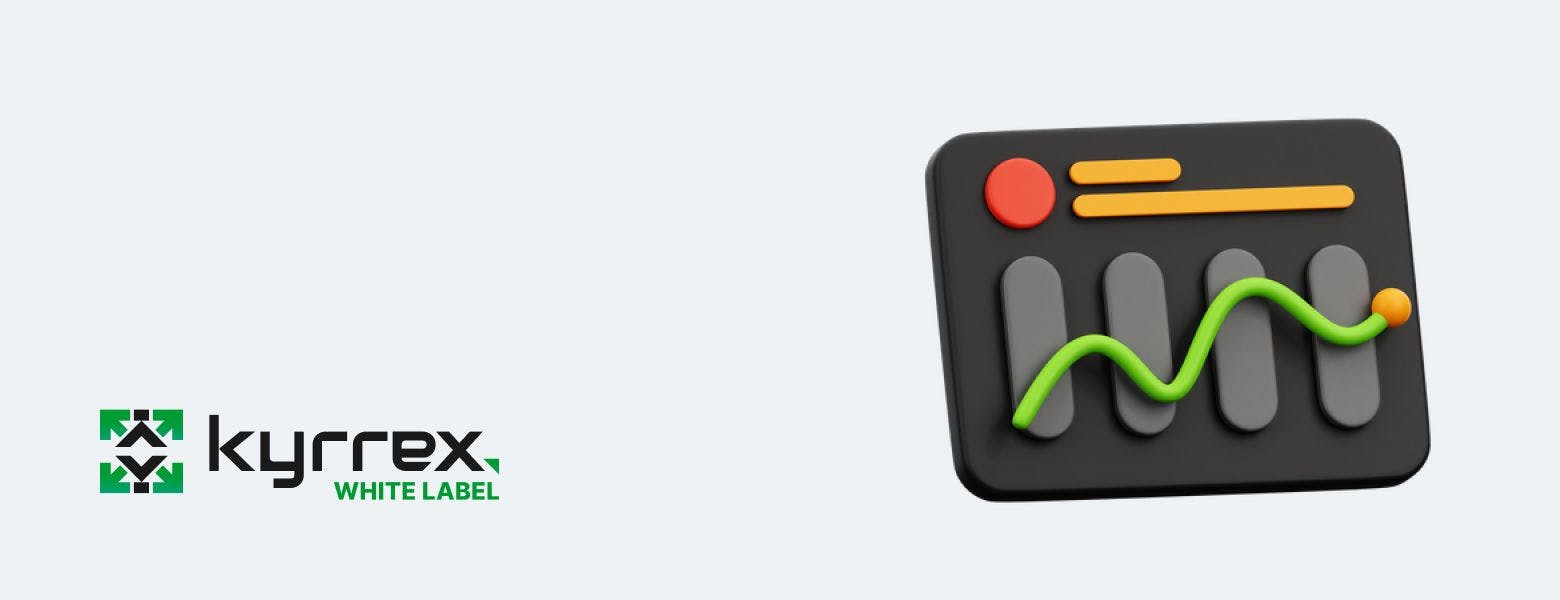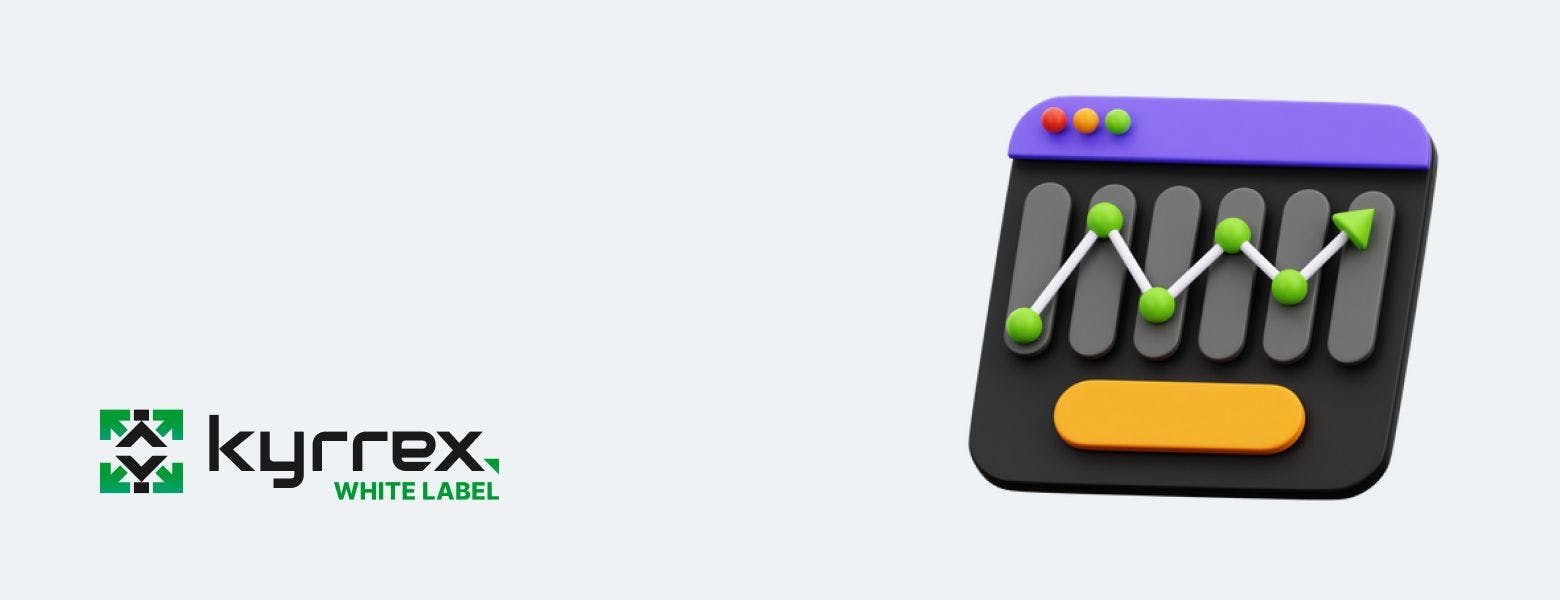#LIQUIDITY HUB

How to Find a Crypto Liquidity Provider
In the cryptocurrency world, understanding the role of liquidity is pivotal for market participants. It’s not just about knowing your digital assets; it’s about ensuring smooth and efficient trading. In this comprehensive guide, you’ll uncover the essentials of crypto liquidity, learn how to find a crypto liquidity provider in 2023, and discover the top players in the market. Ready to dive in? Let’s explore the depths of the crypto liquidity ocean and seize the opportunities ahead.
Short Summary
- Crypto liquidity is an important factor that maintains market stability and allows for efficient trading.
- Identifying reliable crypto liquidity providers requires evaluating factors such as regulatory compliance, trading volume, speed of order execution, technological capabilities and risk management.
- Partnering with a crypto liquidity provider involves verifying compatibility, negotiating fees and setting up connections to ensure successful integration.
Understanding Crypto Liquidity
Crypto liquidity refers to the capacity to rapidly purchase or sell digital assets without impacting their market price. But why does it matter? Ample liquidity ensures market stability and shields exchanges and traders from the effects of price fluctuations. Crypto liquidity providers play a crucial role in maintaining this fine balance, acting as intermediaries between buyers and sellers and facilitating efficient trading.
However, the liquidity of cryptocurrencies can be affected by various factors, such as:
- Trading volume
- Market depth
- Regulations
- Global events
Banned cryptocurrency trading in certain jurisdictions can lead to a decrease in liquidity, as it limits the number of buyers and sellers in the market. Let’s dive deeper into these factors to better understand their impact on crypto liquidity.
Market Liquidity
Market liquidity is the capacity to quickly purchase or sell assets without creating substantial price movements. In the context of the cryptocurrency market, several factors determine liquidity, including market capitalization, token distribution, and trading volume. The presence of numerous exchanges is a testament to the high level of market activity, as users can access multiple platforms to buy or sell digital assets. This increase in trading frequency and volume contributes to improved market liquidity.
Market liquidity is essential as it enables investors to:
- Purchase or sell assets expeditiously without inducing considerable price movements
- Sustain market steadiness
- Prompt more investors to enter the market.
The Role of Crypto Liquidity Providers
Crypto liquidity providers serve as intermediaries between buyers and sellers, helping to ensure market stability and efficient trade execution. They consider the following factors when determining bid and ask prices:
- Trading volume
- Market depth
- Market volatility
- Liquidity of the asset
By considering these factors, liquidity providers help to create a more liquid and efficient market for cryptocurrencies.
A diverse range of factors can affect the liquidity of cryptocurrencies, making the role of crypto liquidity providers essential in maintaining balance and efficient trade implementation in the ever-changing crypto landscape.
Factors Affecting Cryptocurrency Liquidity
Understanding the various factors that can impact cryptocurrency liquidity is crucial for market participants. Factors such as:
- Trading volume
- Market depth
- Regulations
- World events
Can significantly influence the liquidity of digital assets. By examining these factors, you’ll gain valuable insights that can help you navigate the turbulent waters of the crypto market.
Having a good understanding of the factors that can affect liquidity can help you make more informed decisions.
1# Trading Volume
Trading volume refers to the total amount of digital assets that have been transacted on a cryptocurrency exchange within a specified period. Higher trading volume implies higher liquidity, as there is a larger number of buyers and sellers in the market.
Identifying digital assets with high trading volume is one way to spot cryptocurrencies with high liquidity, which is important for market efficiency and stability. Keep an eye on trading volume, as it can serve as a key indicator of the health of the market and your potential profits.
2# Market Depth
Market depth refers to the number of buy and sell orders available at different price levels, with deeper markets providing greater liquidity. A higher market depth implies increased liquidity due to the presence of more participants wishing to execute their orders at various prices.
However, digital assets with low liquidity come with risks, as they are highly volatile and market makers can easily manipulate their prices. Always consider market depth when assessing the liquidity of a cryptocurrency, as it offers a more comprehensive view of the market’s health.
3# Regulations
Regulations play a significant role in the liquidity of cryptocurrencies. Restrictions or bans on cryptocurrency trading can lead to decreased liquidity, as they limit the number of buyers and sellers in the market.
Being aware of the regulatory environment in different jurisdictions is essential for market participants and can help them make informed decisions when trading crypto assets.
4# World Events
World events and economic news can have a considerable effect on digital asset liquidity, altering market stability and investor participation. Factors such as political instability, economic recession, and natural calamities can all influence the liquidity of a cryptocurrency.
As a market participant, it’s vital to stay informed about global events and their potential impact on your digital asset portfolio.
Identifying Reliable Crypto Liquidity Providers

Choosing the right crypto liquidity provider can be a challenging task. To identify reliable providers, it’s essential to consider factors such as:
- Regulatory compliance
- Trading volume
- Speed of order execution
- Technological capabilities
- Risk management
- Range of instruments and services they offer
Let’s delve into these criteria to help you select a trustworthy crypto liquidity provider.
Regulatory Compliance
Ensuring that your chosen crypto liquidity provider complies with relevant laws and regulations is crucial. Regulations ensure that liquidity providers adhere to international standards and comply with national laws. This guarantees protection to investors and maintains the transparency of the crypto market.
Don’t overlook the importance of regulatory compliance when selecting a crypto liquidity provider, as it can safeguard your investments and ensure smooth trading experiences.
Trading Volume
Assessing the provider’s trading volume is essential for gauging market liquidity and potential profits. High trading volume indicates a provider’s ability to maintain a liquid market and execute trades efficiently, minimizing price volatility.
Examining a provider’s trading volume can help you make informed decisions about partnering with a reliable crypto liquidity provider.
Speed of Order Execution
The speed of order execution offered by a crypto liquidity provider is another critical factor to consider. Swift trade execution minimizes slippage and ensures a substantial degree of liquidity, especially when market changes occur due to news events.
Evaluate the provider’s order execution speed to ensure efficient trading and maximize your potential profits.
Technological Capabilities
Examine the provider’s technological capabilities, including algorithmic trading systems and connectivity options. These features facilitate rapid and accurate trade execution and provide access to multiple liquidity sources, ensuring efficient liquidity provision.
A reliable crypto liquidity provider should offer cutting-edge technology to deliver seamless and reliable trading experiences on cryptocurrency exchanges, ensuring optimal performance on crypto exchanges.
Risk Management
Assess the provider’s risk management strategies and protections to ensure secure operations and safeguard your funds. Crypto liquidity providers should employ a range of risk management strategies, such as KYC/AML compliance, fraud detection systems, and risk monitoring tools.
Proper risk management can help prevent potential losses and protect your investments in the volatile crypto market.
Instruments and Services
Consider the range of instruments and services offered by the provider, including crypto-to-fiat conversions and price feeds. Having access to a wide range of instruments and services can enhance your trading experience and help you achieve your investment goals.
Evaluate the provider’s offerings to ensure they meet your specific requirements and align with your trading strategies.
Top Crypto Liquidity Providers in 2023 -2024
As the crypto market continues to evolve, it’s essential to stay informed about the top crypto liquidity providers in 2023. The leading providers are anticipated to be:
- B2Broker
- Kyrrex
- Binance
- Bitfinex
- Balancer
These providers offer a range of liquidity solutions tailored to the needs of brokers, exchanges, and other financial institutions.
Let’s take a closer look at these top players and their unique offerings.
1- B2Broker
B2Broker is a liquidity and technology provider offering access to seven asset classes and over 140 crypto pairs. They provide a variety of liquidity solutions tailored to the needs of brokers, exchanges, and other financial institutions.
Despite their relative newness in the market, B2Broker has quickly established itself as a reliable provider, offering ample liquidity for efficient trading.
2- Kyrrex
Kyrrex is another recent entrant in the growing list of crypto liquidity providers in 2023. The platform offers liquidity services for individuals and institutional clients alongside digital currency banking and crypto turnkey products. The Kyrrex Liquidity Hub processes orders at a speed of up to 1.5 million operations per second per trading instrument, ensuring smooth trading and transfers with minimal slippage.
The liquidity service from Kyrrex is a compact basket that offers support for a dozen cryptocurrencies including Bitcoin, Ethereum, USDC and USDT. Other features include:
- Seamless crypto asset matching
- High liquidity
- Low commission costs through netting
- Full service custodian solution
3- Binance
Binance is a renowned cryptocurrency exchange that offers liquidity services. As a leading blockchain ecosystem, Binance provides access to the largest digital asset exchange, with a product suite that includes:
- An array of trading tools
- Features for traders to analyze and execute trades
- Secure storage for digital assets
- A user-friendly interface for easy navigation and trading
Partnering with Binance ensures access to a high-liquidity market and a variety of trading opportunities.
4- Bitfinex
Bitfinex, established in 2012, is a popular exchange known for its high liquidity and advanced trading features. Owned and operated by iFinex Inc., Bitfinex provides a graphical trading experience with advanced charting capabilities, catering to both novice and experienced traders alike.
If you’re looking for a provider with a proven track record and cutting-edge trading tools, Bitfinex should be at the top of your list.
5- Balancer
Balancer is a decentralized finance (DeFi) platform that offers automated market-making and liquidity provision services. As a DeFi protocol running on Ethereum, Balancer serves as an automated market maker (AMM) and self-balancing portfolio manager.
For those interested in exploring the world of DeFi and liquidity provision, Balancer is a platform worth considering.
How to Partner with a Crypto Liquidity Provider
Partnering with a crypto liquidity provider can be a game-changer for your trading experience. To ensure a successful partnership, it’s essential to check compatibility with your trading platform, negotiate fees, and set up connections for seamless integration.
Let’s explore these steps in more detail to help you forge a fruitful partnership with your chosen provider.
Compatibility Checks
Before partnering with a crypto liquidity provider, it’s crucial to ensure they are compatible with your trading platform and meet your specific requirements. This involves assessing the provider’s API integrations, data feeds, and other technological capabilities.
Compatibility checks help guarantee efficient functioning, interoperability, and harmonious relationships between your trading platform and the provider, leading to a seamless trading experience.
Fee Negotiations
Negotiating fees with a crypto liquidity provider is an essential step in minimizing costs and maximizing profits. Be well-prepared and have a thorough understanding of the services required and the fees that can be accepted. Be flexible and open to compromise while being cognizant of the market rate for the services requested.
Don’t be afraid to negotiate discounts or other incentives to ensure you get the best deal possible.
Setting Up Connections
Setting up connections with your chosen crypto liquidity provider is the final step towards seamless integration and efficient trading. Provide the provider with your API key and any other pertinent information required to establish the connection. Once the connections are set up, you’ll have access to reliable and efficient trading services offered by the crypto liquidity provider, ensuring a smooth trading experience.
With the connection established, you can start trading with confidence. The provider’s services will be provided.
Summary
In conclusion, understanding crypto liquidity and partnering with a reliable provider is essential for successful trading in the ever-growing cryptocurrency market. By considering factors such as trading volume, market depth, regulations, and world events, you can make informed decisions and navigate the volatile crypto landscape with confidence. Armed with this knowledge, you’re now ready to seize the opportunities that lie ahead in the world of cryptocurrencies and make the most of your digital asset investments.
Frequently Asked Questions
How do I choose a crypto liquidity provider?
When choosing a crypto liquidity provider, make sure to research the provider’s reputation and track record, regulatory compliance, depth and asset coverage, fees and scalability. Careful analysis of these factors is essential to finding the right provider for your needs.
Where can I see crypto liquidity?
Check CoinMarketCap or any other coin ranking website to quickly view the daily volume of each cryptocurrency and gain insight into their liquidity levels.
By doing this, you can get a better understanding of which coins are more liquid and which ones are less liquid. This can help you make more informed decisions when investing in cryptocurrencies.
Which crypto exchange has the most liquidity?
Binance is one of the largest and most well-known crypto exchanges, boasting a trading volume of over $2 billion and executing more than 1 million transactions every second. It is the highest-rated exchange with the largest liquidity score in the market.
How much do liquidity providers make crypto?
Liquidity providers can earn up to a 25% annual interest rate on transaction fees. By providing liquidity on Uniswap, for example, LPs earn fees of around 0.3%, though this can be lower for stable assets and higher for more exotic pairs.
What is the significance of trading volume in cryptocurrency liquidity?
Trading volume is an important factor in determining cryptocurrency liquidity, as higher trading volume creates a greater number of buyers and sellers in the market.

How Do Crypto Liquidity Providers Work?
Ever wondered who keeps the gears turning in the fast-paced world of cryptocurrencies? How do crypto liquidity providers work, and what role do they play in ensuring a smooth and stable market for digital assets? In this blog post, we’ll explore the world of crypto liquidity providers, their various types, the incentives they receive, the challenges they face, and how one can become a crypto liquidity provider. Let’s dive in!
Short Summary
- Crypto Liquidity Providers facilitate liquid markets and enhance price stability by providing adequate liquidity.
- They are incentivized to participate in the market through fee reductions, rebates and rewards, and exclusive programs offered by exchanges.
- To become a crypto liquidity provider one must assess their trading strategy, choose an exchange, and manage associated risks.
The Role of Crypto Liquidity Providers
In both traditional financial markets and the cryptocurrency market, liquidity providers play a crucial role in maintaining an efficient and stable trading environment. They ensure smooth trading operations by facilitating a liquid market, enhancing price stability, and reducing price slippage.
But what exactly is liquidity, and why is it so important for the market? In a nutshell, liquidity refers to the ease with which an asset can be bought or sold without significantly affecting its price. High liquidity in the market ensures that there are enough buyers and sellers to satisfy the demand for liquid assets, which in turn helps maintain stable prices.
Now, let’s take a closer look at the different ways crypto liquidity providers contribute to market stability.
Facilitating Smooth Trading
Crypto liquidity providers play a pivotal role in ensuring seamless trading by guaranteeing liquidity in the market, pairing buyers and sellers, and providing an uninterrupted supply of digital assets. They maintain the availability of both buy and sell orders in the market, making it easier for traders to execute their trades without any significant delays or disruptions. This is particularly crucial in the cryptocurrency market, where low liquidity can result in high volatility and drastic price changes, creating an illiquid market with increased risks for traders and investors.
In essence, liquidity providers act as the backbone of the market, ensuring that there are enough buy and sell orders to keep the gears turning. By providing liquidity, they help create a smooth trading experience for market participants, reducing the likelihood of drastic price fluctuations that can occur when dealing with illiquid assets.
So, how do they contribute to price stability in the market?
Enhancing Price Stability
Price stability is an essential aspect of any healthy market, and liquidity providers play a significant role in maintaining it. By injecting buy and sell orders into the market, they help maintain an equilibrium market price that is satisfactory to all parties involved. In a market with high liquidity, even large trades have a minimal impact on asset prices, ensuring a more stable trading environment.
Reduced liquidity, on the other hand, can result in substantial price fluctuations, as even minor shifts in supply or demand can have a considerable influence on prices. To counteract this, crypto liquidity providers actively inject buy and sell orders into the market, effectively maintaining price stability and creating a more efficient trading environment.
Reducing Price Slippage
Price slippage is the discrepancy between the anticipated price of a trade and the actual price at which the trade is executed. Low liquidity or high volatility in the market can result in significant changes in price. This can have a damaging effect on investments. Crypto liquidity providers are integral in mitigating price slippage by ensuring adequate liquidity in the market, enabling traders to purchase or sell assets promptly and at a reasonable price.
By providing liquidity, crypto liquidity providers assist in minimizing the discrepancy between the projected price and the executed price, thereby reducing the possibility of slippage. This ensures that traders can execute their trades quickly and efficiently, without having to worry about significant deviations from their anticipated prices.
Now that we’ve seen the critical role liquidity providers play in the market, let’s explore the different types of crypto liquidity providers.
Types of Crypto Liquidity Providers

There are several types of crypto liquidity providers, each with their unique strategies and approaches to providing liquidity in the market. Broadly speaking, crypto liquidity providers can be classified as:
- Institutional liquidity providers
- Liquidity providers on decentralized exchanges (DEXs) and automated market makers (AMMs)
- Companies or entities offering buy and sell-side liquidity to cryptocurrency exchanges.
Institutional Liquidity Providers
Often referred to as ILPs, they play a pivotal role in the financial markets. They are typically large financial institutions, such as banks, investment firms, or specialized market makers, that offer substantial liquidity to support trading activities. Institutional Liquidity Providers facilitate smooth and efficient market operations by buying and selling financial instruments, including stocks, bonds, currencies, and cryptocurrencies, on a large scale.
The presence of ILPs enhances market stability, ensures competitive pricing, and provides valuable liquidity for institutions and retail traders alike.
Liquidity Providers on DEXs and Automated Market Makers (AMMs)
This type of liquidity provider is vital in the world of decentralized finance (DeFi). These individuals or entities contribute assets to liquidity pools, allowing users to trade directly on DEX platforms.
By doing so, liquidity providers enable the seamless exchange of cryptocurrencies while earning fees and rewards in return.
Companies Offering Buy and Sell-side Liquidity
These companies are instrumental in ensuring cryptocurrency platforms operate smoothly and efficiently. They enhance market depth, reduce spreads, and foster a vibrant trading environment, ultimately benefiting both traders and exchanges. They do this by providing enough liquidity on request so trading at any volume can proceed smoothly and efficiently.
An example is Kyrrex White Label. One of their products, the Kyrrex Liquidity Hub, is designed to ensure seamless liquidity management by client platforms. Kyrrex empowers exchanges to offer a superior trading experience. If you're seeking a liquidity solution that can elevate your exchange's performance, it's time to explore Kyrrex Liquidity Hub and discover the difference it can make for your platform.
All types of liquidity providers can also be grouped into 3: market makers, arbitrageurs and algorithmic traders, based on their method of providing liquidity. Let’s take a closer look at each of these types.
Market Makers
Market makers are entities that generate buy and sell orders to ensure a liquid market, profiting from the bid-ask spread. They play a crucial role in both traditional stock markets and cryptocurrency markets by providing liquidity and ensuring efficient market operations. By buying securities from sellers and selling securities to buyers, they help maintain a seamless flow of assets in the stock market.
Market makers benefit from the difference between the buy and sell prices they quote, referred to as the bid-ask spread. By quoting both buy and sell prices, they are able to capitalize on the spread and generate a profit.
Next, let’s examine the role of arbitrageurs in providing liquidity.
Arbitrageurs
Arbitrageurs are market participants who:
- Take advantage of price discrepancies between different exchanges or trading pairs
- Capitalize on price discrepancies to purchase and sell the same asset at varying prices
- Contribute to market liquidity
- Help maintain a smooth and efficient market by ensuring that asset prices remain consistent across different trading platforms.
This process of exploiting price differences not only benefits arbitrageurs themselves, but also contributes to overall market stability by eliminating pricing inefficiencies and ensuring that asset prices remain consistent across different exchanges.
Lastly, let’s explore the world of algorithmic traders.
Algorithmic Traders
Algorithmic traders are individuals who employ automated trading strategies to provide liquidity, typically reacting to market signals and trends. By using advanced mathematical models and computer programs, these traders can make informed trading decisions in the financial markets. Algorithmic traders employ automated trading strategies to purchase and sell assets, thus providing liquidity to the market.
Furthermore, these traders often utilize advanced algorithms to analyze market signals and trends, allowing them to capitalize on opportunities and provide liquidity more efficiently. Now that we’ve explored the different types of crypto liquidity providers, let’s discuss the incentives they receive for their efforts.
Incentives for Crypto Liquidity Providers
Crypto liquidity providers are offered a variety of incentives to encourage their continued participation in the market. These incentives can include fee reductions, rebates and rewards, as well as exclusive programs offered by exchanges.
Let’s delve deeper into each of these incentives.
Fee Reductions
Exchanges often offer reduced fees to liquidity providers as an incentive to engage in the market. These fee reductions can take the form of higher maker fee rebates or reduced trading fees for liquidity providers. By offering lower fees, exchanges encourage participation from liquidity providers, ensuring a more liquid and efficient market for all traders.
Utilizing limit orders and adding liquidity to the market can also help traders reduce their overall trading costs, further incentivizing their participation as liquidity providers.
Rebates and Rewards
Rebates and rewards are another form of incentive offered to crypto liquidity providers. These incentives may be based on the liquidity provider’s trading volume or other performance metrics. By offering attractive rebates and rewards, exchanges encourage the provision of liquidity, ensuring a more efficient trading environment for all users.
Additionally, liquidity providers may be eligible for rewards based on their relative share of liquidity or receive additional incentives such as tokens or fees.
Special Programs
Special programs, such as Binance’s Liquidity Provider Programs, are designed to support and incentivize liquidity providers in the crypto market. These programs offer various benefits to liquidity providers, such as higher maker fee rebates, higher API limits, and low-latency connectivity services. By participating in these programs, liquidity providers can enjoy reduced trading fees, attractive rebates related to market-making activity and trading volume, and an improved trading environment for all users on the platform.
In summary, fee reductions, rebates and rewards, and special programs are all crucial incentives that encourage liquidity providers to continue contributing to the market’s efficiency and stability. However, being a crypto liquidity provider is not without its challenges.
Challenges Faced by Crypto Liquidity Providers
Crypto liquidity providers face several challenges in their quest to ensure smooth and stable markets. Some of these challenges include market volatility, regulatory uncertainty, and technology and security risks.
Let’s examine each of these challenges in more detail.
Market Volatility
Market volatility can make it difficult for liquidity providers to maintain stable prices and manage risks. In the cryptocurrency market, market volatility is often attributed to the abundance of buyers and sellers, the lack of regulation, and the lack of liquidity. Crypto liquidity providers are exposed to a variety of risks when confronted with market volatility, such as the risk of adverse selection, the risk of cross-sectional variation in liquidity, and the risk of price slippage.
To manage market volatility, liquidity providers can employ a variety of strategies, such as hedging, diversifying their portfolios, and utilizing algorithmic trading strategies. Additionally, they can use stop-loss orders and limit orders to restrict their exposure to market volatility. By closely monitoring trading volumes, liquidity providers can better adapt their strategies to changing market conditions.
Regulatory Uncertainty
Regulatory uncertainty in the cryptocurrency space can create challenges for liquidity providers, including:
- Compliance and potential legal issues
- Increased risk and volatility
- Difficulty in evaluating and managing exposure
- Restricted access to banking services
- Augmented compliance costs
These factors can significantly impact the capacity of liquidity providers to function effectively, especially when dealing with less liquid assets.
To reduce the risks associated with regulatory uncertainty, liquidity providers can stay abreast of regulatory developments, engage with regulators, and utilize technology to automate compliance processes.
Lastly, let’s discuss the technology, security, and liquidity risk that liquidity providers must manage.
Technology and Security Risks
Technology and security risks, such as hacking and system failures, can pose significant threat to liquidity providers’ operations and assets. These risks can be categorized into four main types:
- Operational risks: These involve the potential for system failure, data loss, and other operational issues.
- Technology risks: These involve the possibility of cyber-attacks, hacking, and other malicious activities.
- Custody risks: These involve the potential for theft or misappropriation of assets.
- Security risks: These involve the possibility of unauthorized access to systems and data.
To safeguard against these risks, liquidity providers must have robust security measures in place to ensure the security of their systems and the protection of their data.
Now that we’ve explored the challenges faced by crypto liquidity providers, let’s discuss how one can become a crypto liquidity provider.
How to Become a Crypto Liquidity Provider
Becoming a crypto liquidity provider involves several steps, including assessing your trading strategy, choosing an exchange, and managing risks.
Let’s delve deeper into each of these steps.
Assessing Your Trading Strategy
Before becoming a crypto liquidity provider, it is essential to evaluate your trading strategy to ensure that you can effectively provide liquidity in the market. Factors to consider include:
- The type of trading you intend to pursue
- The capital available
- Your risk tolerance
- The amount of time you can commit to trading
Taking these factors into consideration will help you determine if becoming a liquidity provider is the right choice for you.
A well-developed trading strategy should take into account market conditions, potential opportunities, and risk management techniques. By carefully assessing your trading strategy, you can ensure that you are well-equipped to provide liquidity in the cryptocurrency market.
Next, let’s discuss the process of choosing an exchange, including centralized exchanges.
Choosing an Exchange
Choosing the right exchange is crucial, as different exchanges may offer varying incentives and support for liquidity providers. When selecting an exchange, it is important to consider factors such as:
- The fees charged
- The security measures implemented
- The liquidity of the exchange
- The customer support available.
By carefully evaluating these factors, you can select an exchange that best aligns with your goals and objectives as a liquidity provider. Once you have chosen an exchange, the final step in becoming a crypto liquidity provider is managing risks.
Managing Risks
Managing risks is an essential aspect of being a successful crypto liquidity provider. Some of the risks you may need to manage include:
- Market volatility
- Regulatory uncertainty
- Technology and security risks
- Counterparty risk
To effectively manage these risks, you should consider the following steps:
- Risk identification
- Risk assessment
- Risk treatment
- Risk monitoring and reporting
By proactively managing these risks, you can ensure the success of your operations as a crypto liquidity provider and contribute to a more stable and efficient market.
Summary
Throughout this blog post, we have explored the vital role of crypto liquidity providers in maintaining a stable and efficient market, the different types of liquidity providers, the incentives they receive, and the challenges they face. We also discussed the steps to become a crypto liquidity provider, including assessing your trading strategy, choosing an exchange, and managing risks. By understanding the intricacies of providing liquidity in the cryptocurrency market, you can contribute to a more efficient and stable trading environment for all participants. So, are you ready to dive into the world of crypto liquidity provision and help shape the future of digital asset trading?
Frequently Asked Questions
How much do liquidity providers make crypto?
Liquidity providers can earn transaction fees on decentralized exchanges, such as Uniswap, at a rate of around 0.3%. This fee is usually equivalent to about a 25% annual interest rate.
With lower fees available for stable assets and higher rates available for more exotic pairs, liquidity providers can make good money from providing crypto services.
How does a liquidity provider work?
A liquidity provider deposits assets into a pool to facilitate trades on DEXs and AMMs, earning Liquidity Pool Tokens (LP) in return. These tokens are also called liquidity provider tokens.
Can you make money being a liquidity provider?
You can make money being a liquidity provider by earning transaction fees from trades within the liquidity pool or by yield farming. Liquidity providers get rewarded in proportion to the amount of crypto assets they stake, allowing them to generate extra income with minimal effort.
What are the risks of crypto liquidity provider?
Liquidity providers face the risk of an impermanent loss due to sharp price fluctuations in the tokens they provide liquidity for. This occurs when one token in the pool increases or decreases more than the other, leading to losses for the liquidity provider.
The risk of impermanent loss can be mitigated by diversifying the liquidity pool, using stop-loss orders, and monitoring the market closely. Additionally, liquidity providers can use automated strategies to manage their risk.
What is liquidity in Crypto?
Liquidity in cryptocurrency refers to the ease and speed with which digital assets can be bought and sold near their market prices. Cryptocurrency investors must assess a coin’s liquidity before investing, as low liquidity can result in significant price volatility.

Liquidity Hub vs. Traditional Exchanges: A Comparative Analysis
In the dynamic world of cryptocurrency trading, ensuring seamless transactions and constant liquidity are pivotal elements for any successful trading platform. Two primary types of trading venues that have emerged to meet these needs are traditional exchanges and liquidity hubs.
While traditional exchanges have been the backbone of cryptocurrency trading, providing a platform for buyers and sellers to meet and exchange assets, liquidity hubs like Kyrrex are making waves with their innovative approach to providing robust liquidity and streamlined trading experiences.
In this article, we will delve into the nuances of liquidity hubs and traditional exchanges.
Understanding Traditional Exchanges
Traditional cryptocurrency exchanges serve as digital marketplaces where traders can buy, sell, and exchange a variety of cryptocurrencies. These exchanges operate on an order book model, where buy and sell orders are listed along with their quantities and prices. Traders can either place a market order, which executes immediately at the best available price, or a limit order, which executes only at a specific price set by the trader.
Here are some key characteristics of traditional cryptocurrency exchanges:
1. Liquidity
The liquidity on a traditional exchange depends largely on its user base. Higher the number of active traders, greater is the liquidity. However, it can vary from one cryptocurrency to another depending on the demand and supply for each coin on the exchange.
2. Fees
Traditional exchanges typically charge fees on transactions, which can include trading fees, deposit fees, and withdrawal fees. The structure of these fees can vary widely from one exchange to another. Some exchanges also offer fee reductions for high-volume traders.
3. Transparency
Most traditional exchanges are quite transparent when it comes to their operations. They publicly list all buy and sell orders in their order book and disclose their fee structures on their websites. However, the degree of transparency can vary between different exchanges.
4. Regulation
The regulatory environment for traditional cryptocurrency exchanges varies by jurisdiction. While some countries have clear regulations and require exchanges to be licensed, others have less clear or even restrictive rules.
5. Technology
Traditional exchanges rely on their trading engine's capability to match buy and sell orders in real-time. The quality of this trading engine, including its speed and reliability, can significantly impact a trader's experience.
While traditional cryptocurrency exchanges have facilitated the growth of the crypto ecosystem by providing a platform for trading, they can sometimes need help with price slippage and illiquidity, particularly for less popular coins. This is where the newer concept of liquidity hubs comes into play, promising to provide a solution for these potential challenges.
Understanding Liquidity Hubs
Liquidity Hubs are emerging as a transformative solution to address liquidity challenges in the trading landscape, particularly in the cryptocurrency market. In essence, a Liquidity Hub is an ecosystem that aggregates liquidity from various sources, ensuring smooth and efficient trade executions even for large orders.
One excellent example of a Liquidity Hub is the one offered by Kyrrex. Kyrrex's Liquidity Hub is designed to address the core issue of liquidity in the order book, which is a critical factor for both private and institutional clients when choosing a cryptocurrency exchange. In the cryptocurrency market, exchanges with low operational turnover and lack of liquidity risk losing their competitive advantages and customer loyalty. Kyrrex's Liquidity Hub addresses this problem effectively.
The Liquidity Hub's key features are designed to ensure optimal liquidity and transaction efficiency. Here's an overview of the standout features:
Provision of Adequate Liquidity
The Liquidity Hub ensures that there's always the right amount of liquidity exchange stack available for clients. This capacity to provide constant access to liquidity effectively mitigates the risk of liquidity shortage in the market, ensuring seamless trading operations for all clients.
Full Trade Coverage
Liquidity Hub covers all trades, which means that all trades in any crypto-assets are fully covered. This ensures reliable execution of all transactions and contributes to building trust with clients.
High-Speed Order Processing
With the capability to process up to 1.5 million operations per second for each trading instrument, the Liquidity Hub boasts an extremely high speed of order processing. This leads to enhanced transaction efficiency, which is a crucial factor in volatile markets like cryptocurrencies.
Full GCD Cryptocurrency Setup and Maintenance
The Liquidity Hub takes care of the complete setup and maintenance of GCD cryptocurrency, easing the burden on participants and facilitating smooth trading.
Minimal Network Commissions
For netting between participants, the Liquidity Hub charges minimal network commissions, which is a key advantage for users concerned about transaction costs.
Joining the Liquidity Hub is a simple three-step process. Initially, an application is filled for a technological connection to the Liquidity Hub followed by an AML procedure. Next, all the necessary technical documentation, keys, and data are provided for connection to the Liquidity Hub. The final step involves making a security deposit, enabling the applicant's clients to transact on the Liquidity Hub platform.
Kyrrex's Liquidity Hub, focusing on providing optimal liquidity, efficiency, and transaction coverage, is a fitting example of how these platforms are revolutionizing trading in the cryptocurrency market.
Comparative Analysis: Traditional Exchanges vs Liquidity Hubs
Traditional cryptocurrency exchanges and liquidity hubs each have their unique strengths and advantages, and they serve different needs in the market.
Traditional exchanges have been the cornerstone of cryptocurrency trading. Their transparent structure and wide range of assets have allowed traders to exchange coins based on market conditions. However, their liquidity is largely determined by the size and activity of their user base, which can sometimes lead to challenges, particularly for less popular or newer coins.
Liquidity hubs, on the other hand, take a different approach. They aggregate liquidity from various sources, ensuring high liquidity even for less popular tokens. Furthermore, they leverage sophisticated technology to provide rapid order execution and advanced trading features. Kyrrex, for instance, can process up to 1.5 million operations per second for each trading instrument, providing a seamless trading experience.
In terms of fees, traditional exchanges usually have a fee structure that includes trading, deposit, and withdrawal fees. Liquidity hubs, on the other hand, may offer more competitive fees due to their ability to minimize network commission costs through netting between participants.
Conclusion
The trading landscape in the cryptocurrency industry is evolving rapidly, with new platforms and technologies continually emerging. Traditional cryptocurrency exchanges have played a crucial role in this ecosystem, offering a platform for traders to exchange a variety of assets.
However, liquidity hubs are challenging the status quo by offering superior liquidity provision, lightning-fast transaction speeds, and potentially more competitive fees. Their role in aggregating liquidity from various sources and ensuring efficient order routing serves to address some of the common challenges faced by traditional exchanges, particularly around liquidity and transaction speed.

Maximizing Profits with Liquidity Hub: Tips and Strategies
Effective liquidity management is not just a luxury, but an absolute necessity. Liquidity can often be the deciding factor in the smooth execution of trades and, ultimately, the profitability of your trading activities. This is where a tool like a liquidity hub comes into play. This article will delve into how you can leverage a liquidity hub to maximize your profits, focusing specifically on the liquidity hub offered by Kyrrex.
Understanding Kyrrex's Liquidity Hub
Liquidity hubs serve as an aggregate of multiple liquidity sources, allowing for the seamless execution of trades even during market volatility.
Kyrrex's Liquidity Hub stands as an exemplary model in liquidity management. It is designed to ensure constant access to liquidity, effectively mitigating the risk of liquidity shortages in the market, thus ensuring seamless trading operations for its users.
One of the standout features of the Kyrrex Liquidity Hub is its ability to facilitate high-speed transactions. With the capability to process up to 1.5 million operations per second for each trading instrument, Kyrrex's platform ensures that your trading operations are never bogged down by latency or downtime.
Furthermore, it provides full trade coverage, implying that all trades in any crypto-assets are fully backed, adding another layer of security to your trading activities. Lastly, the hub assures minimal network commissions for netting between participants, making it a cost-effective choice for traders.
Maximizing Profits: Core Strategies
Leveraging a liquidity hub to its full potential requires a strong understanding of the core strategies involved in trading.
- Use of Adequate Liquidity: liquidity hubs like Kyrrex's ensure constant liquidity. This allows traders to execute transactions at their desired price points, reducing slippage and the risk of being unable to execute trades, particularly in a volatile market.
- Speed and Efficiency: high-speed transactions can make a significant difference in trading outcomes, especially in fast-paced markets like cryptocurrencies. Kyrrex's ability to process up to 1.5 million operations per second can ensure your trades are completed on time, minimizing the risk of price changes during transaction times.
- Cost Management: minimizing transaction costs is a direct way to enhance profits. With Kyrrex's Liquidity Hub, network commissions for netting between participants are kept to a minimum, leaving more profits in the hands of traders.
- Risk Management: advanced security features like trade coverage offered by Kyrrex can help manage and mitigate trading risks. Ensuring that all trades are fully backed helps protect against adverse market movements.
Advanced Strategies
To further maximize profits, traders can employ several advanced strategies:
- Leveraging Technological Advancements: Kyrrex's Liquidity Hub is designed with the latest technology, enabling seamless integration with other systems and offering a cutting-edge trading experience. This can lead to increased efficiency and, in turn, enhanced profitability.
- Capitalizing on Market Volatility: liquidity hubs shine in volatile markets, offering opportunities to execute trades quickly and take advantage of rapid price changes. Kyrrex's high-speed transactions can be critical to making the most of these opportunities.
- Diversification: with access to multiple sources of liquidity, traders can diversify their trading activities across a range of crypto-assets. This diversification can help manage risk and potentially lead to increased returns.
Conclusion
Maximizing profits in trading requires a multifaceted approach, combining both core and advanced strategies. Leveraging a tool like Kyrrex's Liquidity Hub can provide traders with an edge in this regard, offering continuous access to liquidity, high-speed transactions, minimized costs, and robust security measures.
While the choice to use a liquidity hub depends on individual trading goals and risk tolerance, it's clear that such platforms present unique opportunities for profit maximization.

Streamlining Your Crypto Business with Liquidity Hub Integration
Understanding and managing liquidity is a crucial part of running a successful cryptocurrency business. It helps ensure smooth and efficient trading which, in turn, can attract more traders to your platform. One effective way to manage liquidity is through a tool called a 'liquidity hub'.
In simple terms, a liquidity hub brings together or 'aggregates' liquidity from different sources. This helps improve trading efficiency and minimizes the risk of not being able to complete trades due to a lack of liquidity.
In this article, we'll look at how integrating a liquidity hub into your cryptocurrency business can streamline operations and boost profits.
The Role of Liquidity in Crypto Business
Liquidity plays a pivotal role in the cryptocurrency sector. It measures how quickly and easily a cryptocurrency can be bought or sold without impacting its price. High liquidity levels mean transactions can be completed swiftly, and prices remain stable. This is crucial for any cryptocurrency business as it directly impacts the ease of trading and overall user experience.
Without adequate liquidity, an exchange or trading platform may face issues such as price slippage (where the actual transaction price differs from the expected price due to market fluctuations), slow transaction times, and the risk of being unable to fulfill orders. All these factors can dissuade traders from using a platform and negatively impact its reputation and growth.
Benefits of Integrating a Liquidity Hub
Integrating a liquidity hub like Kyrrex's can benefit a crypto business, significantly enhancing its operational efficiency and attractiveness to traders.
- Improved Liquidity: a liquidity hub, by its very design, aggregates liquidity from multiple sources, thereby ensuring consistent liquidity availability. This makes your platform more attractive to traders and can help retain and attract new users.
- Increased Operational Trade Turnover: Kyrrex's Liquidity Hub offers a robust software solution to boost operational trade turnover. It helps create a dynamic and healthy market that is more likely to attract and retain traders.
- Complete Transaction Overlap: the software performs matching and balancing between all client accounts, ensuring seamless operations and mitigating the risk of unfulfilled orders. This leads to smoother trading experiences and higher user satisfaction.
- Efficient Order Routing: sophisticated algorithms route your orders efficiently, maximizing profitability and minimizing slippage. This results in an optimized trading environment that can boost trade success rates and user satisfaction.
- Access to Diverse Markets: with a Liquidity Hub, your business can tap into multiple markets, enhancing trading flexibility and resilience. It allows users to diversify their trading activities and achieve better returns.
In a nutshell, a liquidity hub integration can significantly enhance your cryptocurrency business, improving liquidity, trade turnover, order execution, and access to diverse markets. By doing so, it not only improves the user experience on your platform but also positions your business for sustained growth.
Liquidity Hub Integration Process
Integrating a liquidity hub into your cryptocurrency business can be a seamless process, particularly if you're working with a comprehensive solution like Kyrrex's Liquidity Hub. Here are the key stages of the integration process:
- Application and Verification: the first step involves filling out an application form for technical connection to the Liquidity Hub in your Personal Account and undergoing Anti-Money Laundering (AML) verification. This step is crucial for compliance with global financial regulations.
- Technical Setup: after approval, you'll receive all the necessary technical documentation, keys, and data for measures implementation. This includes setting up a high-speed connection to partner exchange platforms to ensure rapid order execution.
- SecurityDeposit: the final stage involves making a security deposit. This enables your clients to transact on the Liquidity Hub platform, ensuring you have sufficient liquidity to cover all potential trades.
Kyrrex's Liquidity Hub is designed to make this process as smooth and straightforward as possible, empowering businesses to benefit from enhanced liquidity and efficient trading quickly.
Conclusion
Liquidity plays a critical role in the success of any cryptocurrency business. It's a key factor in attracting and retaining traders and ensuring the smooth execution of trades. By integrating a liquidity hub like Kyrrex's into your business, you can significantly enhance your platform's liquidity, streamline operations, increase trade turnover, and provide a more optimized trading environment. In doing so, you are setting your crypto business up for sustained success in a highly competitive market.
